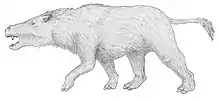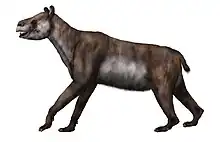Diadiaphorus
Diadiaphorus is an extinct genus of litoptern mammal from the Miocene of Argentina (Ituzaingó, Pinturas, Chiquimil and Santa Cruz Formations) and Bolivia (Nazareno Formation), South America.
| Diadiaphorus | |
|---|---|
 | |
| Diadiaphorus robustus skull | |
| Scientific classification | |
| Domain: | Eukaryota |
| Kingdom: | Animalia |
| Phylum: | Chordata |
| Class: | Mammalia |
| Order: | †Litopterna |
| Family: | †Proterotheriidae |
| Subfamily: | †Proterotheriinae |
| Genus: | †Diadiaphorus Ameghino, 1887 |
| Type species | |
| †Diadiaphorus majusculus Ameghino, 1887 | |
| Species | |
| |
| Synonyms | |
|
Genus synonymy
D. majusculus
| |
Description
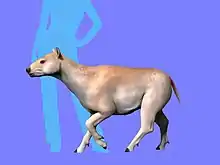
Size comparison between a human and D. majusculus
Diadiaphorus closely resembled a horse, but was only around 1.2 metres (3.9 ft) in body length with a weight 70 kilograms (150 lb), similar to a modern sheep.[1] It had three toes, only one of which touched the ground. This toe had a large hoof; the two outer toes were rudimentary, much like those of early horses such as Merychippus. Unlike horses, however, Diadiaphorus lacked fused limb bones. Its skull was short and had a relatively large brain cavity. Judging from its low molars, Diadiaphorus ate soft vegetation, such as leaves.[2]
References
- D. Patterson, Bruce (2012) Bones, Clones, and Biomes: The History and Geography of Recent Neotropical Mammals p.92
- Palmer, D., ed. (1999). The Marshall Illustrated Encyclopedia of Dinosaurs and Prehistoric Animals. London: Marshall Editions. p. 247. ISBN 1-84028-152-9.
This article is issued from Wikipedia. The text is licensed under Creative Commons - Attribution - Sharealike. Additional terms may apply for the media files.

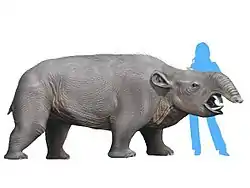
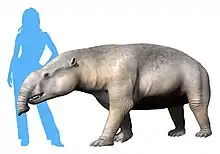
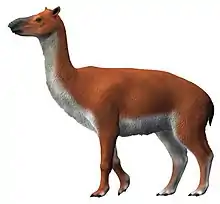
.jpg.webp)
